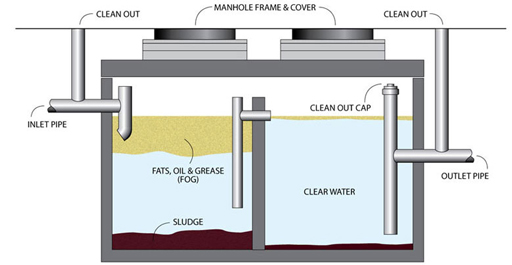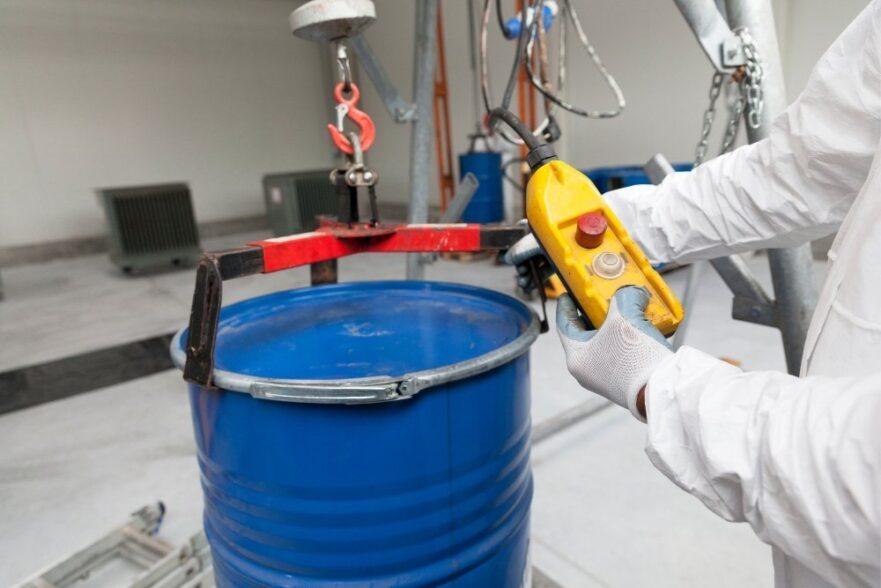Expert Liquid Waste Removal Melbourne: Fast and Economical Providers
Wiki Article
Just How Fluid Waste Disposal Functions: A Detailed Overview of Techniques and Technologies Employed

Summary of Fluid Waste Kind
The complexity of fluid waste kinds necessitates a complete understanding of their qualities and ramifications for disposal. Fluid waste can extensively be categorized right into several kinds, consisting of commercial, metropolitan, farming, and hazardous waste. Each classification exhibits unique homes, needing details management strategies to alleviate ecological and wellness risks.
Industrial liquid waste stems from producing procedures and usually contains an array of pollutants, such as heavy steels, solvents, and natural substances. Local liquid waste, primarily making up wastewater from homes and commercial facilities, contains organic issue, nutrients, and pathogens (industrial wastewater treatment). Agricultural fluid waste, consisting of drainage from ranches, might contain fertilizers, pesticides, and animal waste, posing dangers to water top quality and ecosystems
Dangerous fluid waste is identified by its toxicity, sensitivity, or potential to create injury. Comprehending these diverse fluid waste types is essential for establishing efficient disposal approaches and ensuring compliance with environmental guidelines.
Physical Therapy Methods

Screening is the first action, where bigger fragments and debris are gotten rid of from the fluid waste using displays or grates. In sedimentation storage tanks, heavier fragments work out at the base, developing a sludge layer, while the cleared up liquid can be additional dealt with.
Filtering is one more vital technique that entails passing the fluid via porous materials, such as sand or membrane layers, to record smaller fragments. This step boosts the high quality of the fluid, making it suitable for subsequent therapy processes.

Chemical Treatment Methods
Chemical treatment methods are vital for properly handling liquid waste, especially in addressing liquified and colloidal pollutants that physical approaches may not sufficiently eliminate. These methods use different chemical agents to reduce the effects of, precipitate, or transform harmful substances right into much less damaging kinds.One typical method is coagulation and flocculation, where chemicals such as alum or ferric chloride are included to advertise the aggregation of suspended fragments. This procedure improves sedimentation, permitting simpler removal of the resulting sludge. Additionally, oxidation procedures, using agents like chlorine or ozone, are employed to damage down complicated natural substances and virus, providing the waste much safer for discharge or additional treatment.
Neutralization is one more essential technique, which readjusts the pH of acidic or alkaline waste streams to neutral levels, avoiding possible harm to downstream systems and the atmosphere. Additionally, progressed oxidation processes (AOPs) utilize mixes of oxidants and ultraviolet light to degrade consistent pollutants, accomplishing a higher degree of therapy performance.
Organic Therapy Procedures
Biological treatment procedures play a vital function in the management of fluid waste by making use of bacteria to decay raw material and decrease contaminant degrees. These processes can be generally categorized into anaerobic and cardio therapies, each using details microbial communities to achieve effective waste degradation.Cardio treatment involves using oxygen to facilitate the breakdown of organic products by germs. This process is frequently carried out in turned on sludge systems, where aeration containers give a helpful environment for microbial development, leading to the oxidation of natural contaminants. The resultant biomass can be divided from treated effluent through sedimentation.
In comparison, anaerobic treatment takes place in the absence of oxygen, depending on different microorganisms to break down natural issue. This approach is liquid waste disposal especially advantageous for high-strength waste, as it produces biogas, an eco-friendly energy resource, while reducing sludge manufacturing. Technologies such as anaerobic digesters are frequently utilized in industrial and metropolitan applications.
Both cardio and anaerobic biological therapies not just minimize the ecological influence of fluid waste however likewise assist in resource recuperation, making them necessary parts of lasting waste management techniques. Their efficiency, flexibility, and efficiency support their widespread application across various fields.
Emerging Technologies in Disposal
Cutting-edge techniques to liquid waste disposal are swiftly progressing, driven by improvements in technology and an increasing focus on sustainability. Among these arising innovations, membrane layer bioreactors (MBRs) have gained grip for their ability to combine biological treatment with membrane purification, leading to premium effluent that can be recycled in various applications. MBRs allow smaller sized footprints and extra effective operations contrasted to conventional systems.An additional promising advancement is the usage of anaerobic food digestion combined with nutrient healing innovations, which not just treats liquid waste however additionally creates biogas and recuperates useful nutrients like nitrogen and phosphorus. This dual advantage improves source performance and reduces ecological influence.
Additionally, advanced oxidation processes (AOPs) are being embraced for the deterioration of intricate natural toxins. These approaches utilize effective oxidants and stimulants to damage down pollutants at the molecular degree, providing a highly reliable remedy for challenging waste streams.
In addition, the assimilation of expert system and device learning in waste monitoring systems is optimizing operational performance and anticipating upkeep, leading to decreased expenses and improved ecological conformity. These technologies show a considerable shift towards more sustainable and efficient liquid garbage disposal practices.
Final Thought
In final thought, efficient fluid waste disposal demands a comprehensive understanding of numerous strategies and modern technologies. By continuously progressing these approaches, it becomes possible to resolve the expanding difficulties connected with liquid waste, ultimately adding to ecological defense and resource recuperation.Fluid waste disposal is a crucial aspect of ecological administration, calling for an extensive understanding of various techniques and modern technologies customized to various waste types. Fluid waste can extensively be categorized right into a number of types, including commercial, local, agricultural, and dangerous waste. Agricultural fluid waste, consisting of overflow from ranches, may consist of fertilizers, chemicals, and animal waste, positioning threats to water high quality and environments.
Various physical therapy methods play a critical duty in managing liquid waste successfully - industrial wastewater treatment.In verdict, reliable liquid waste disposal requires a thorough understanding of numerous techniques and innovations
Report this wiki page